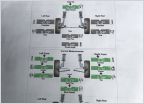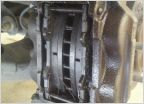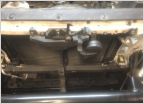-
Welcome to Tacoma World!
You are currently viewing as a guest! To get full-access, you need to register for a FREE account.
As a registered member, you’ll be able to:- Participate in all Tacoma discussion topics
- Communicate privately with other Tacoma owners from around the world
- Post your own photos in our Members Gallery
- Access all special features of the site
Where NOT to use anti-seize compound....?
Discussion in '2nd Gen. Tacomas (2005-2015)' started by Crow Horse, Mar 2, 2021.
Page 1 of 3
Page 1 of 3


 TRD Short-Shifter (Seeking Opinions/Experiences)
TRD Short-Shifter (Seeking Opinions/Experiences) Sheet metal clanking sound after lift install
Sheet metal clanking sound after lift install How to check brake pad thickness? No straw test?
How to check brake pad thickness? No straw test? "Taz" - ProfHobbit's Build Log, 2007 Access Cab 2.7l
"Taz" - ProfHobbit's Build Log, 2007 Access Cab 2.7l HF Badlands 9k winch install ARB bumper
HF Badlands 9k winch install ARB bumper



